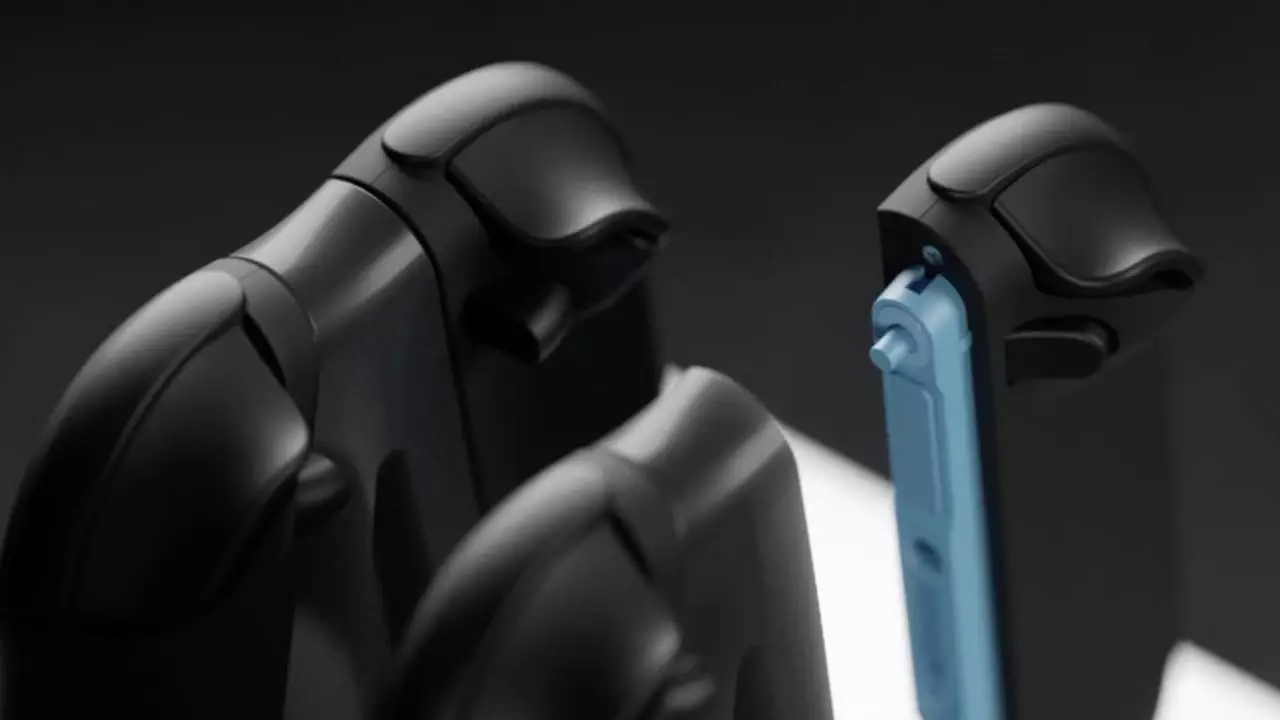In an unexpected turn of events during CES 2025, accessory developer Genki has taken the gaming community by storm with its proactive approach towards the yet-to-be-announced ‘Switch 2’. The company, led by CEO Eddie Tsai, has not only hinted at but openly demonstrated its upcoming accessories for Nintendo’s anticipated console. This bold maneuver has raised eyebrows and sparked discussions about Genki’s insight into Nintendo’s forthcoming hardware.
The main attraction of Genki’s presentation was the newly designed Joy-Con controllers, which feature an innovative magnetic attachment system. Tsai elaborated that by pressing a designated release button on the rear of the controllers, a small pin activates to detach the Joy-Cons from the console. The concept is simple yet effective; the magnetic connection is strong enough for regular gaming sessions, but can be conveniently disengaged when necessary. This approach contrasts with the traditional sliding mechanism of current Joy-Cons, which has its pros and cons.
However, as intriguing as the magnetic feature sounds, the potential for user-induced detachment through excessive force raises concerns. Tsai seemingly hints, albeit indirectly, at the possibility that adventurous users may find themselves experimenting with the Joy-Cons in ways that could lead to potential damage. The recommendation to avoid such testing serves as a reminder that while innovation is exciting, there are boundaries to explore without crossing into reckless territory.
Speculations About Genki’s Intel
One cannot overlook the implications of how Genki acquired information about ‘Switch 2’. Tsai’s reluctance to disclose the sources of his insights has led to rampant speculation. Industry insiders, including Laura Kate Dale, suggest that Genki might have resorted to unorthodox means, potentially even securing a functioning prototype from dubious channels. Should this conjecture hold any weight, it raises questions about the ethical lines companies can toe when vying for a competitive edge in a saturated market.
Despite the questionable circumstances surrounding their information, Genki has delivered a promising glimpse into a console that seems poised to shift the gaming landscape. The Verge’s observations emphasize a difference in physical design between the new console, which notably resembles the Steam Deck in dimensions yet remains distinctly compact due to its Joy-Con design. The balance between portability and functionality appears to be a significant consideration in this design philosophy.
The Anticipated Future of Nintendo’s Console
As the gaming community awaits an official announcement from Nintendo, anticipated to land before March 2025, Genki’s revelations have undoubtedly stirred excitement. The juxtaposition of Genki’s insights against the industry standard highlights a burgeoning dialogue surrounding gaming hardware and accessories. Will the new magnetic Joy-Cons position the ‘Switch 2’ as a game-changer in the industry?
The conversation is now open to fans and developers alike. Do these new features enhance the user experience, or do the risks associated with their adoption outweigh the benefits? As the countdown to the official announcement continues, the excitement grows, leaving the gaming world in eager anticipation of what lies ahead. The curiosity surrounding the Joy-Con system remains high—will this innovative mechanism redefine how users interact with their consoles?

